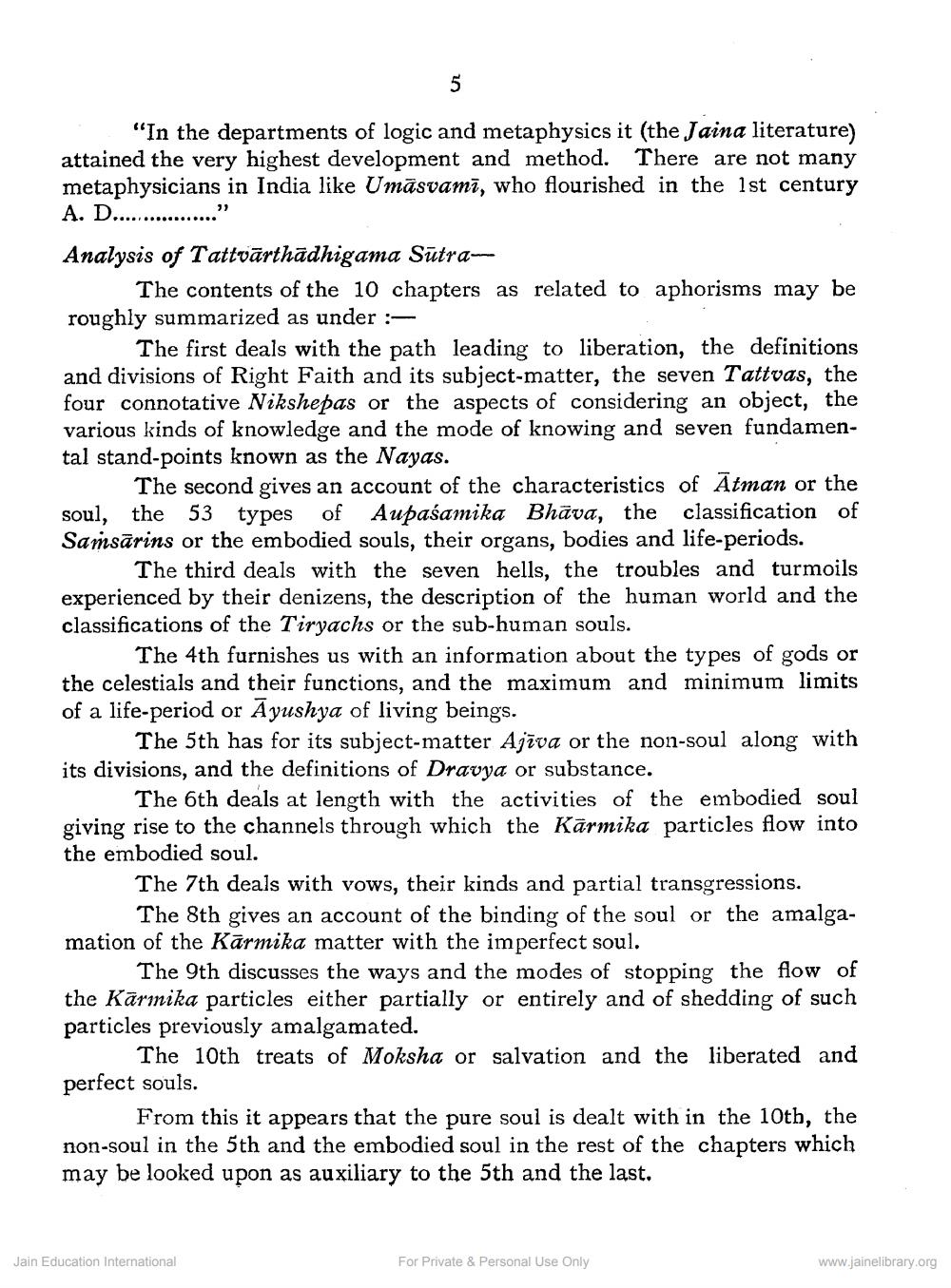________________
"In the departments of logic and metaphysics it (the Jaina literature) attained the very highest development and method. There ar metaphysicians in India like Umāsvami, who flourished in the 1st century A. D................." Analysis of Tattvārthādhigama Sutra
The contents of the 10 chapters as related to aphorisms may be roughly summarized as under :
The first deals with the path leading to liberation, the definitions and divisions of Right Faith and its subject-matter, the seven Tattvas, the
onnotative Nikshepas or the aspects of considering an object, the various kinds of knowledge and the mode of knowing and seven fundamental stand-points known as the Nayas.
The second gives an account of the characteristics of Ātman or the soul, the 53 types of Aupaśamika Bhāva, the classification of Samsārins or the embodied souls, their organs, bodies and life-periods.
The third deals with the seven hells, the troubles and turmoils experienced by their denizens, the description of the human world and the classifications of the Tiryachs or the sub-human souls.
The 4th furnishes us with an information about the types of gods or the celestials and their functions, and the maximum and min of a life-period or Ayushya of living beings.
The 5th has for its subject-matter Ajīva or the non-soul along with its divisions, and the definitions of Dravya or substance.
The 6th deals at length with the activities of the embodied soul giving rise to the channels through which the Kārmika particles flow into the embodied soul.
The 7th deals with vows, their kinds and partial transgressions.
The 8th gives an account of the binding of the soul or the amalgamation of the Kārmika matter with the imperfect soul.
The 9th discusses the ways and the modes of stopping the flow of the Karmnika particles either partially or entirely and of shedding of such particles previously amalgamated.
The 10th treats of Moksha or salvation and the liberated and perfect souls.
From this it appears that the pure soul is dealt with in the 10th, the non-soul in the 5th and the embodied soul in the rest of the chapters which may be looked upon as auxiliary to the 5th and the last.
Jain Education International
For Private & Personal Use Only
www.jainelibrary.org




